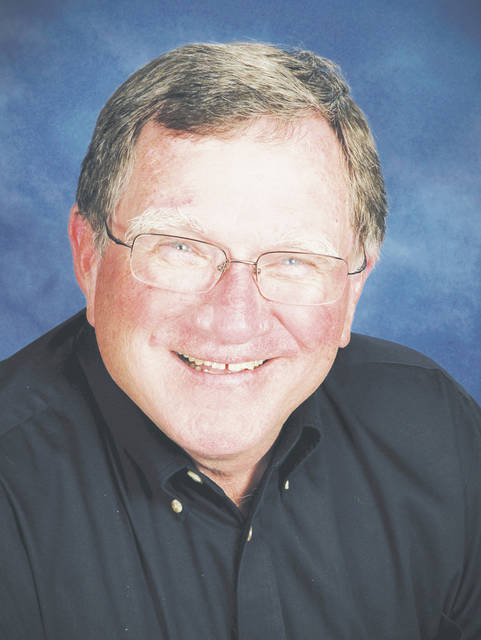
Pictures and images are important to all us. We can read words that describe a recent situation or that describe an incident that happened 100 years ago.
We can listen to music that changes words into song and melody. Poetry can sharpen an image and the image will then be lodged deep within our heart as emotion.
Look at the pictures of battlefields. The earliest battlefield photographs we have were generated during the Civil War. The pictures are surprisingly clear. The carnage, gore and death are all too real.
Whether the images come from Gettysburg, Guadalcanal, Pork Chop Hill, Kabul or Kandahar the common feature is death.
During World War I, American, Canadian, British and French soldiers fought and died in the trenches of No-Man’s-Land. Much of this area is now known as Flanders Field. This region of Belgium was filled with trenches and barriers. It stretched throughout the Western Front.
The scenes from Flanders Fields are reminiscent of battlefields from almost every war, but on this battlefield on May 1915, Lieutenant Colonel John McCrae, a Canadian army officer, watched as his friend, Lieutenant Alexis Helmer, died of the horrific wounds he received during the battle.
The next day McCrae looked over the barren mud and dirt of the battlefield and noticed something astounding. Bright red poppies were growing where soldiers had fallen and died.
Moved by the sight; he wrote the poem – In Flanders Fields.
In Flanders fields the poppies blow
Between the crosses, row on row,
That mark our place; and in the sky
The larks, still bravely singing, fly
Scarce heard amid the guns below.
We are the Dead. Short days ago,
We lived, felt dawn, saw sunset glow,
Loved and were loved, and now we lie
In Flanders fields.
Take up our quarrel with the foe:
To you from failing hands we throw
The torch; be yours to hold it high.
If ye break faith with us who die
We shall not sleep, though poppies grow
In Flanders fields.
Just a few years after the poem was written, Moina Michael started the tradition of wearing a red poppy flower in memory and in honor of those who died in war. She was moved by McCrae’s poem and wrote a short response, We Shall Keep the Faith, that became very popular and encouraged the wearing of red poppies.
… the blood of heroes never dies
But lends a luster to the red
Of the flower that blooms above the dead
In Flanders fields.
And now the Torch and Poppy Red
We wear in honor of our dead.
Fear not that ye have died for naught;
We’ll teach the lesson that ye wrought
In Flanders Fields.
Apparently, poppy seeds have the ability to rest dormant for years just beneath the surface of the ground. When the soil of the battlefield is torn up by soldier’s boots and the constant explosions that tear at the earth during the heat of battle, the poppy seeds are then exposed.
After the battle, they then start to blossom and grow; turning the battlefield red with beauty… not with blood.
The tradition of wearing a red poppy has grown and continues. The wearing of small cloth or fabric poppies has become traditional on both Memorial Day and Veterans Day. It symbolizes the extreme sacrifices our veterans make on our behalf.
A story has circulated that a young lady was buying a red poppy to wear in honor of veterans. The old gentleman who was selling the silk poppies as a fundraiser for his veteran’s organization offered her some insight on the meaning of the poppy and how to wear it properly.
After selling the little red poppy, he told her, “Men often wear the poppy on their left label, over their heart. Women can wear their poppy on their right side. It is less important on which side it is worn, but is vital that it be worn with pride.
The red represents the blood of all those who gave their lives, the black represents the mourning of those who didn’t have their loved ones return home. The green leaf represents the green grass and the crops that will someday grow on the ground where the war destroyed so much.”
He pointed out that the green leaf should be positioned at 11 o’clock to represent the eleventh hour of the eleventh day of the eleventh month, the time that WW1 formally ended. He explained that all of this symbolism is important and that we need to make sure that future generations understand the meaning of these important symbols; knowing that his generation will someday be gone, and the true meaning of wearing a red poppy could be lost.
We must always remember and honor our veterans.
Near Flanders Field in Belgium, there are now six peaceful acres in the town of Waregem. Those acres have been dedicated as a final resting place for 411 American soldiers who died fighting in that nearby section of Flanders Field. Poppies are the most common flower found in that small cemetery.
Wouldn’t it be wonderful if peace sprang from the battlefields of the world as easily as the poppies grew in Flanders Fields.
Randy Riley is President of Council of Wilmington.


